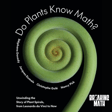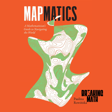
The Fluid Dynamics of Sheep
In this episode of Breaking Math, we explore the unexpected link between sheep herding and fluid dynamics! Did you know that the way sheep move in a herd is governed by the same mathematical principles as water flowing in a river? By following simple rules of alignment, cohesion, and separation, sheep create a coordinated, fluid-like movement that scientists can model to predict behavior.
Join us as we break down how these principles apply not only to animal herds but also to real-world applications like robotics, autonomous vehicles, and crowd management. Whether you're a math lover, curious about animal behavior, or fascinated by the science behind traffic flow, this episode reveals the incredible power of mathematics in nature. Don’t forget to subscribe for more insights into the surprising connections between math and the world around us!
Timestamps:
00:00 - Introduction to Sheep Herding and Fluid Dynamics
02:15 - What is Fluid Dynamics?
06:30 - How Sheep Behave Like Particles in a Fluid
10:45 - Mathematical Models of Herding Behavior
16:20 - Real-world Applications: From Farming to Robotics
20:55 - Conclusion & Key Takeaways
Tags: #BreakingMath #FluidDynamics #AnimalBehavior #MathInNature #SheepHerding #Robotics #ScienceExplained #EmergentBehavior
Become a patron of Breaking Math for as little as a buck a month
Follow Breaking Math on Twitter, Instagram, LinkedIn, Website, YouTube, TikTok
Follow Autumn on Twitter and Instagram
Follow Gabe on Twitter.
Become a guest here
email: breakingmathpodcast@gmail.com



















